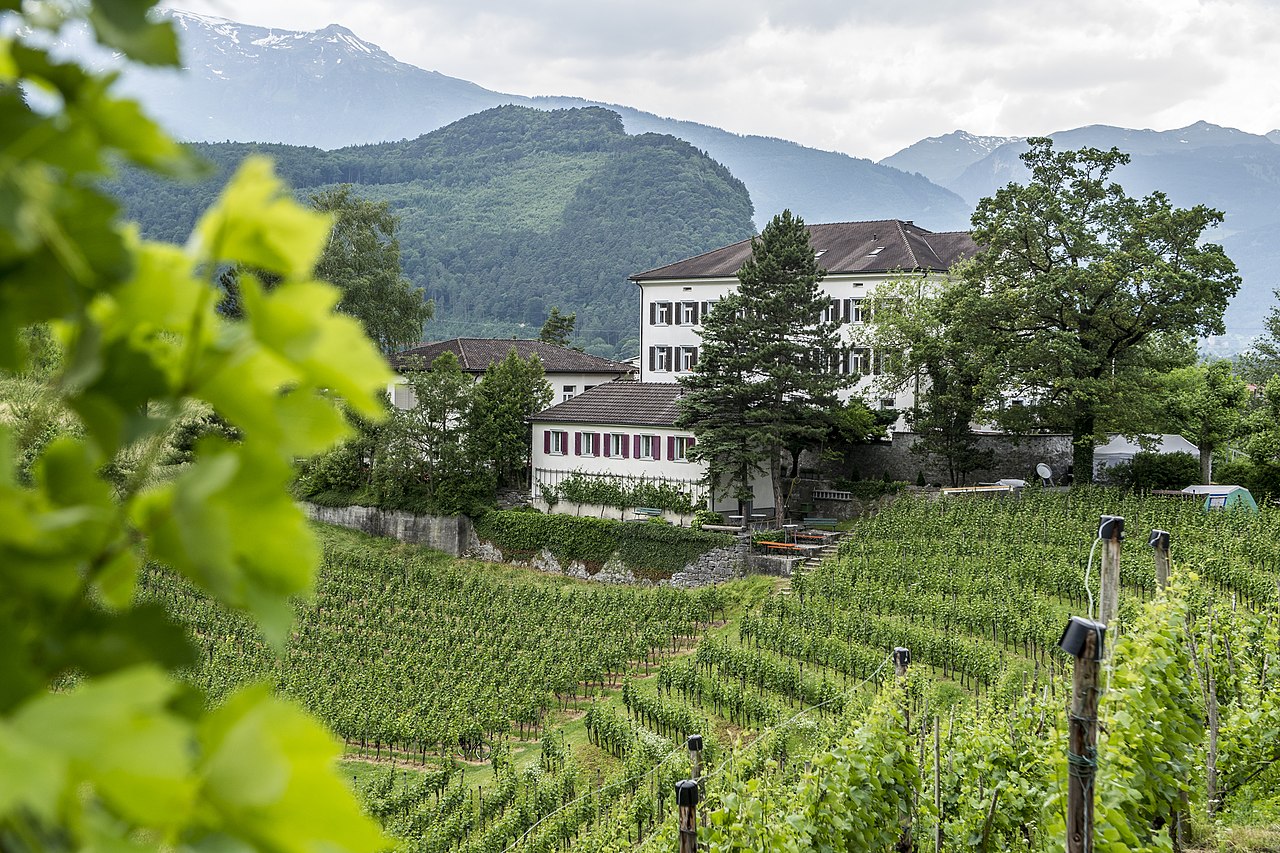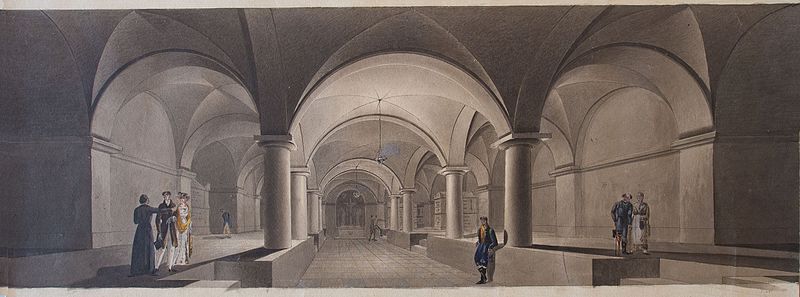by Susan Flantzer
© Unofficial Royalty 2023

Anna Maria von Boskowitz and Černahora, Princess of Liechtenstein; Credit – Wikipedia
Baroness Anna Maria von Boskowitz and Černahora was the wife of Karl I, the first Prince of Liechtenstein and the founder of the Princely Family of Liechtenstein. Born in 1575 in Vienna, then in the Archduchy of Austria, she was the elder of the two daughters of Baron Johann von Boskowitz and Černahora and Baroness Anna von Kraigk, both members of Moravian noble families.

Boskovic Castle, inherited by Anna Maria and her sister Katharina upon their father’s death; Credit – By Mardoko – Own work, CC BY-SA 4.0, https://commons.wikimedia.org/w/index.php?curid=35303874
Anna Maria had one sister. When their father died in 1597, Anna Maria and her sister Katharina inherited their father’s lands, including Boskovic Castle, because he had no male heirs.
- Katharina von Boskowitz and Černahora (1579 – 1637), married Maximilian of Liechtenstein, brother of Anna Maria’s husband, Karl I, Prince of Liechtenstein, no children

Anna Maria’s husband Karl I, Prince of Liechtenstein; Credit – Wikipedia
In 1590, Anna Maria married Baron Karl von Liechtenstein, a Moravian nobleman and the son of Hartmann II, Baron of Liechtenstein and Countess Anna Maria of Ortenburg, and the future first Sovereign Prince of Liechtenstein
Anna Maria and Karl had four children:
- Princess Anna Maria Franziska of Liechtenstein (1601 – 1640), married Maximilian, 2nd Prince of Dietrichstein, had eight children
- Princess Franziska Barbara of Liechtenstein (1604 – 1655), married Wenzel Werner of T’Serclaes, Count of Tilly, had nine children
- Prince Heinrich of Liechtenstein (died young)
- Karl Eusebius, Prince of Liechtenstein, (1611 – 1684), married his niece Princess Johanna Beatrix of Dietrichstein, had nine children
Through his relationship with the brothers, the childless Holy Roman Emperor Rudolf II and Archduke Matthias of Austria (the future Holy Roman Emperor Matthias), Anna Maria’s husband Karl gained political positions and land, and ultimately became the first Sovereign Prince of Liechtenstein. In 1592, Karl became the treasurer of Archduke Matthias. Karl and his younger brothers, Maximilian, the husband of Anna Maria’s sister, and Gundakar, had been raised in the Evangelical Lutheran faith, but they all converted to Catholicism in 1599. In 1599, Karl became the chief judge in Moravia. In 1600, Holy Roman Emperor Rudolf II appointed Karl Chief Steward at the Imperial Court in Vienna, Austria. Four years later, Karl was appointed Governor of Moravia.
Besides being the elected Holy Roman Emperor, Rudolf II also held the traditional Habsburg territories as King of Bohemia, King of Hungary, King of Croatia, Archduke of Austria, and Margrave of Moravia. A power struggle developed between the childless Rudolf and his heir and brother Matthias. In April 1608, Matthias besieged the city of Prague and forced his brother Rudolf to negotiate and sign a peace treaty. This resulted in the redistribution of power. Rudolf kept Bohemia, Silesia, and Lusatia while Matthias received Hungary, Austria, and Moravia. Karl of Liechtenstein had supported Matthias in the power struggle. On December 20, 1608, Matthias raised Karl from Baron of Liechtenstein to Fürst of Liechtenstein (Prince), a reigning sovereign ruler or monarch. (Non-reigning descendants of a Fürst are referred to in German as Prinz (prince) or Prinzessin (princess.)
Matthias was elected Holy Roman Emperor upon Rudolf’s death in 1612 and reigned until he died in 1619. In 1614, Holy Roman Emperor Matthias gave Karl another reward, the Duchy of Troppau in Silesia. In November 1620, Karl and his brother Maximilian took lead roles in the imperial victory at the Battle of White Mountain near Prague during the Thirty Years War. In 1622, Karl was appointed governor and then Viceroy of the Kingdom of Bohemia.

Church of the Nativity of the Virgin Mary in Vranov, Czech Republic: Credit – Von Ojin – Eigenes Werk, CC BY-SA 3.0, https://commons.wikimedia.org/w/index.php?curid=6438939
Karl’s younger brother Maximilian and his wife Katharina, Anna Maria’s sister, founded a Pauline monastery and had the Church of the Nativity of the Virgin Mary built on the monastery grounds in the village of Vranov, then in Moravia, now in the Czech Republic. A crypt in the church served as the burial site for members of the House of Liechtenstein. When more room was needed for burials another crypt was built and the church then had the Old Crypt and the New Crypt.
Anna Maria died at the age of 50, on June 6, 1625, in Plumov, Moravia, now in the Czech Republic. She was buried in the Old Crypt at the Church of the Nativity of the Virgin Mary. Karl survived his wife by nearly two years, dying on February 12, 1627, aged 57, at the Liechtenstein Palace (link in German) on Lesser Town Square in Prague, Kingdom of Bohemia, now in the Czech Republic. He was also buried in the Old Crypt at the Church of the Nativity of the Virgin Mary.
This article is the intellectual property of Unofficial Royalty and is NOT TO BE COPIED, EDITED, OR POSTED IN ANY FORM ON ANOTHER WEBSITE under any circumstances. It is permissible to use a link that directs to Unofficial Royalty.
Works Cited
- Anna Maria Semberová of Boskovice and Cerná Hora (2023) Wikipedia. Available at: https://en.wikipedia.org/wiki/Anna_Maria_%C5%A0emberov%C3%A1_of_Boskovice_and_%C4%8Cern%C3%A1_Hora (Accessed: 15 June 2023).
- Flantzer, Susan, 2021. Karl I, Prince of Liechtenstein. [online] Unofficial Royalty. Available at: <https://www.unofficialroyalty.com/karl-i-prince-of-liechtenstein/> [Accessed 15 June 2023].
- Johann Schembera von Czerna-Hora Freiherr von Boskowitz (2022) geni_family_tree. Available at: https://www.geni.com/people/Johann-Schembera-von-Czerna-Hora-Freiherr-von-Boskowitz/6000000015270648137 (Accessed: 15 June 2023).
- Princely House of Liechtenstein. 2023. Biographies of all Reigning Princes – 17th century. [online] Available at: <https://fuerstenhaus.li/en/die-biographien-aller-fuersten/17-century/> [Accessed 15 June 2023].























